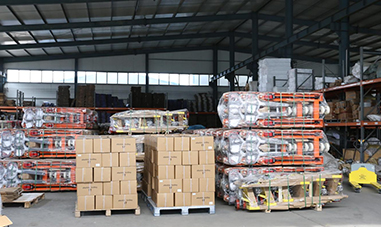


The Evolution and Advantages of Wireless Electric Hoists
In the ever-evolving landscape of industrial technology, the wireless electric hoist has emerged as a game-changer in material handling and lifting operations. This innovative machinery combines the principles of electric hoisting with advanced wireless technology, transforming the way industries manage heavy loads. This article delves into the evolution, advantages, and applications of wireless electric hoists, highlighting their pivotal role in modern industrial practices.
Evolution of Hoisting Technology
The concept of hoisting dates back thousands of years, with early humans using simple pulleys and levers to lift heavy objects. As technology advanced, the introduction of electric hoists in the 20th century revolutionized lifting operations, offering significant improvements in efficiency and safety. Traditionally, electric hoists required cumbersome cables and wires for operation, which often led to tangled cords and limited mobility on the job site.
In recent years, the advent of wireless technology has propelled hoisting equipment to new heights. Wireless electric hoists eliminate the need for physical connections, allowing operators to control lifting mechanisms remotely via radio frequency or Bluetooth. This shift not only simplifies the operation but also enhances safety by reducing the risk of accidents related to cable entanglement or tripping hazards.
Advantages of Wireless Electric Hoists
1. Increased Mobility and Flexibility One of the primary benefits of wireless electric hoists is their mobility. Without the constraints of cables, these hoists can be easily moved around job sites, providing greater flexibility in various lifting applications. This adaptability is especially valuable in dynamic work environments, such as construction sites or warehouses, where space and layout can change frequently.
2. Enhanced Safety Features Safety is a paramount concern in any industrial setting. Wireless electric hoists offer improved safety features, including remote operation, which allows operators to control heavy lifting from a safe distance. This distance minimizes the risk of injury from falling loads or equipment malfunctions. Additionally, many wireless hoists are equipped with smart safety mechanisms, such as overload protection and emergency stop functions.

3. Efficiency and Productivity In an industry where time is money, the efficiency provided by wireless electric hoists cannot be overstated. Their rapid setup and ease of use enable faster lifting operations, reducing downtime and improving overall productivity. Operators can focus on task completion without the added burden of managing cumbersome cables or manual controls.
4. Improved Ergonomics The ergonomic design of wireless electric hoists contributes to a healthier workplace. By minimizing manual handling and reducing the physical strain on workers, these hoists help decrease the risk of repetitive strain injuries. Electric hoists streamline operations, allowing workers to concentrate on other essential tasks, ultimately enhancing job satisfaction and performance.
5. Cost-Effectiveness While the initial investment in wireless electric hoists may be higher than traditional models, the long-term benefits justify the expenditure. Organizations can save significantly on maintenance costs due to the reduced wear and tear associated with eliminating cables. Furthermore, increased efficiency leads to higher throughput, ultimately contributing to a better return on investment.
Applications Across Industries
Wireless electric hoists find applications across various sectors, including construction, manufacturing, shipping, and logistics. In construction, these hoists facilitate the quick movement of building materials, reducing labor costs and improving project timelines. In manufacturing, they assist in assembly line work, allowing for seamless integration with automated systems.
Similarly, shipping and logistics companies leverage wireless electric hoists to streamline the loading and unloading of goods, enhancing operational efficiency while maintaining high safety standards. The versatility of wireless electric hoists makes them an invaluable tool in any industry requiring the transport of heavy materials.
Conclusion
In conclusion, the wireless electric hoist represents a significant advancement in hoisting technology, offering a myriad of advantages that enhance safety, efficiency, and productivity across various industries. As businesses continue to embrace technological innovations, the adoption of wireless electric hoists is likely to grow, paving the way for a safer and more efficient future in material handling. With their mobility, ergonomic benefits, and versatility, wireless electric hoists promise to redefine industry standards and revolutionize the way heavy lifting is conducted.



